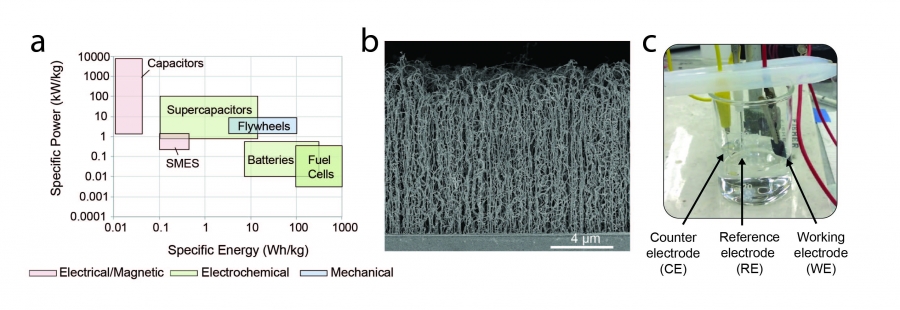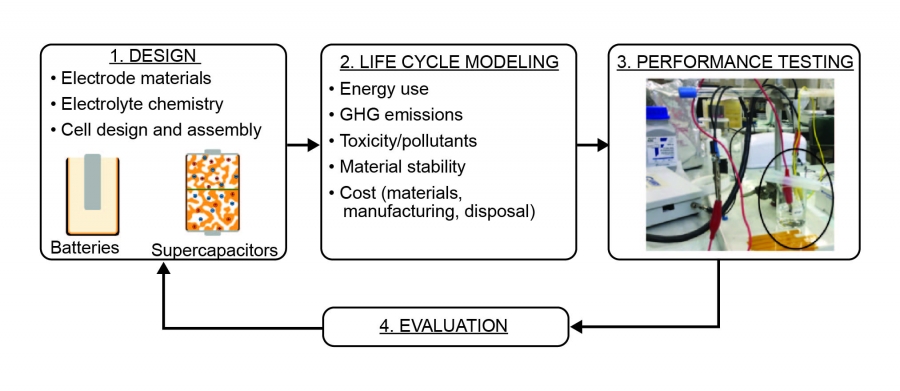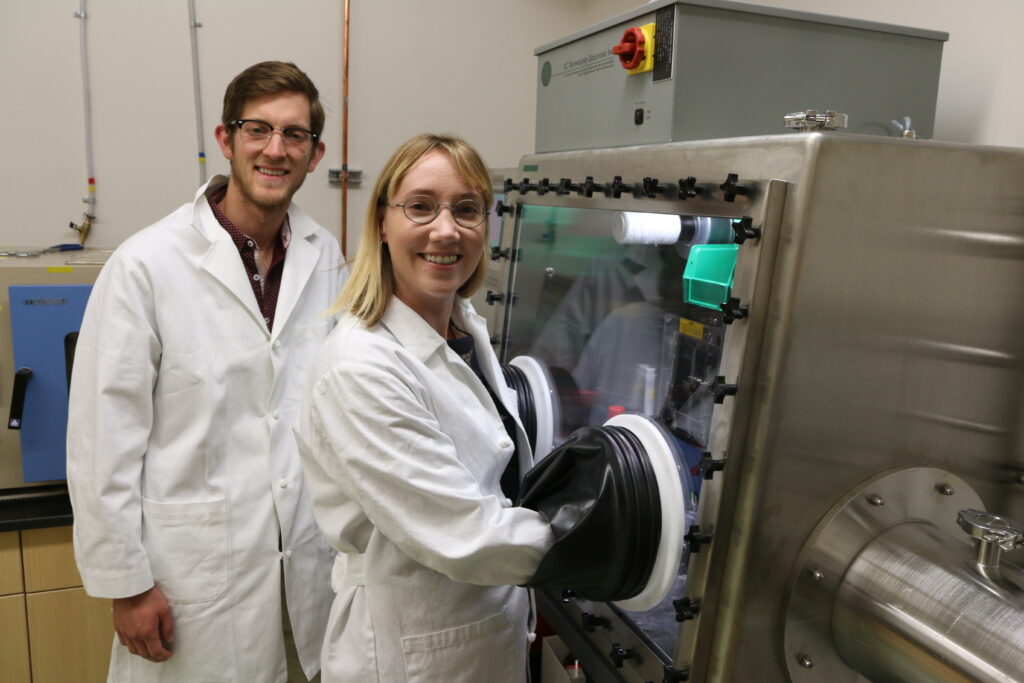Our lab explores the nanoscale manufacturing of materials and devices for electrochemical energy storage and human health applications. The main focus areas of our research are:
1) Supercapacitor energy storage
2) Sodium-ion and lithium-ion batteries
3) Nanofluidic particle manipulation using deterministic lateral displacement
Supercapacitor Energy Storage
Supercapacitors are electrochemical energy storage devices characterized by rapid charge-discharge speeds, high power densities, and long cycle lifetimes compared to batteries. Supercapacitors have many promising applications in electric vehicles, renewable energy, and consumer electronics. In this work, we are improving the energy and power density of supercapacitor electrode materials through advanced nanoscale manufacturing techniques, including atomic layer deposition of pseudocapacitive materials on high surface area carbon electrodes (vertically aligned carbon nanotubes).
Figure 1: a) Power and energy density comparison of energy storage technologies (1). b) Carbon nanotube forest coated with ruthenium oxide for supercapacitor energy storage (2). c) Supercapacitor performance testing.
Select Publications:
Roseanne Warren, Firas Sammoura, Fares Tounsi, Mohan Sanghadasa and Liwei Lin, “Highly Active Ruthenium Oxide Coating via ALD and Electrochemical Activation in Supercapacitor Applications,” Journal of Materials Chemistry – A, Vol. 3, 15568-15575, 2015.
Emmeline Kao, Chen Yang, Roseanne Warren, Alina Kozinda, and Liwei Lin, “ALD Titanium Nitride on Vertically Aligned Carbon Nanotube Forests for Electrochemical Supercapacitors,” Sensors and Actuators A: Physical, Vol. 240, pp. 160-166, 2016.
Xining Zang, Caiwei Shen, Emmeline Kao, Roseanne Warren, Ruopeng Zhang, Kwok Siong Teh, Junwen Zhong, Minson Wei, Buxuan Li, Yao Chu, Mohan Sanghadasa, Adam Schwartzberg, and Liwei Lin, “Titanium Disulfide Coated Carbon Nanotube Hybrid Electrodes Enable High Energy Density Symmetric Pseudocapacitors,” Advanced Materials, Vol. 30, pp. 1704754, 2018.
Sodium-Ion and Lithium-Ion Batteries
Battery research in the AEIL has two main objectives: 1) engineering electrode materials to increase energy storage capacity, and 2) understanding how electrochemical cells can be designed not only to maximize energy storage capacity and minimize cost, but also to minimize the net environmental impact of batteries over their lifetime (Figure 2a). We fabricate our own battery coin cells in our lab, and test their performance under various charge-discharge conditions. We also perform fundamental modeling of electrochemical cells as the basis of our life cycle environmental impact studies.
Select Publications:
Nolan Ingersoll, Zahra Karimi, Dhruv Patel, Robert Underwood, and Roseanne Warren, “Metal Organic Framework-Derived Carbon Structures for Sodium-Ion Battery Anodes,” Electrochimica Acta, Vol. 297, pp. 129-136, 2019.
Lithium-ion battery life cycle analysis publication forthcoming
Nanofluidic Particle Manipulation Using Deterministic Lateral Displacement
Deterministic lateral displacement (DLD) is a microfluidic particle manipulation technique that separates particles based on size. Our research aims to bring DLD to the nanoscale using novel nanomanufacturing approaches for applications in nanoparticle manipulation (Figure 30. This research is funded by NSF’s Nanomanufacturing Program.
Figure 3: DLD arrays printed using the Nanoscribe 3D Photonic Pro GT printer.
Publications forthcoming.




